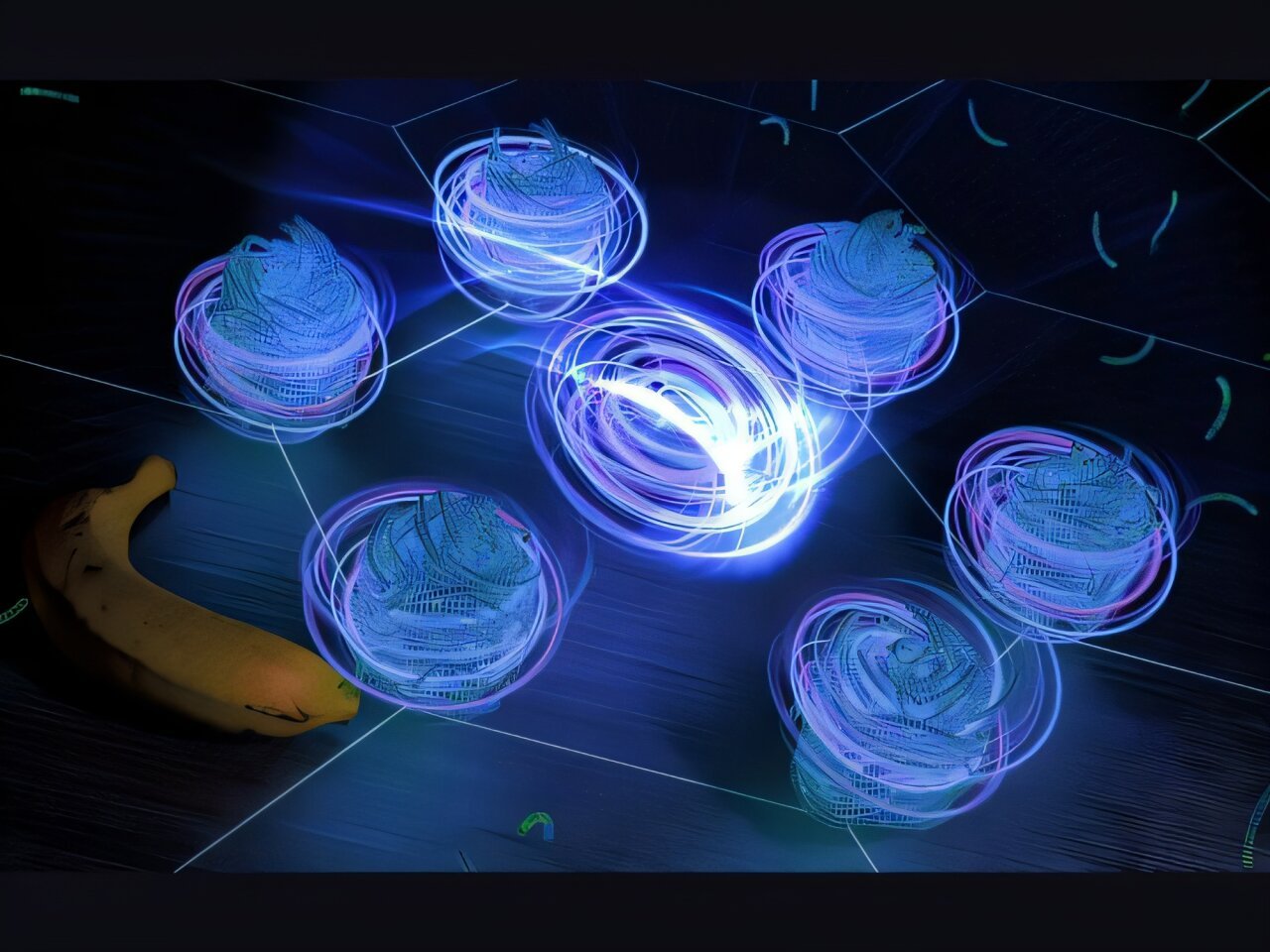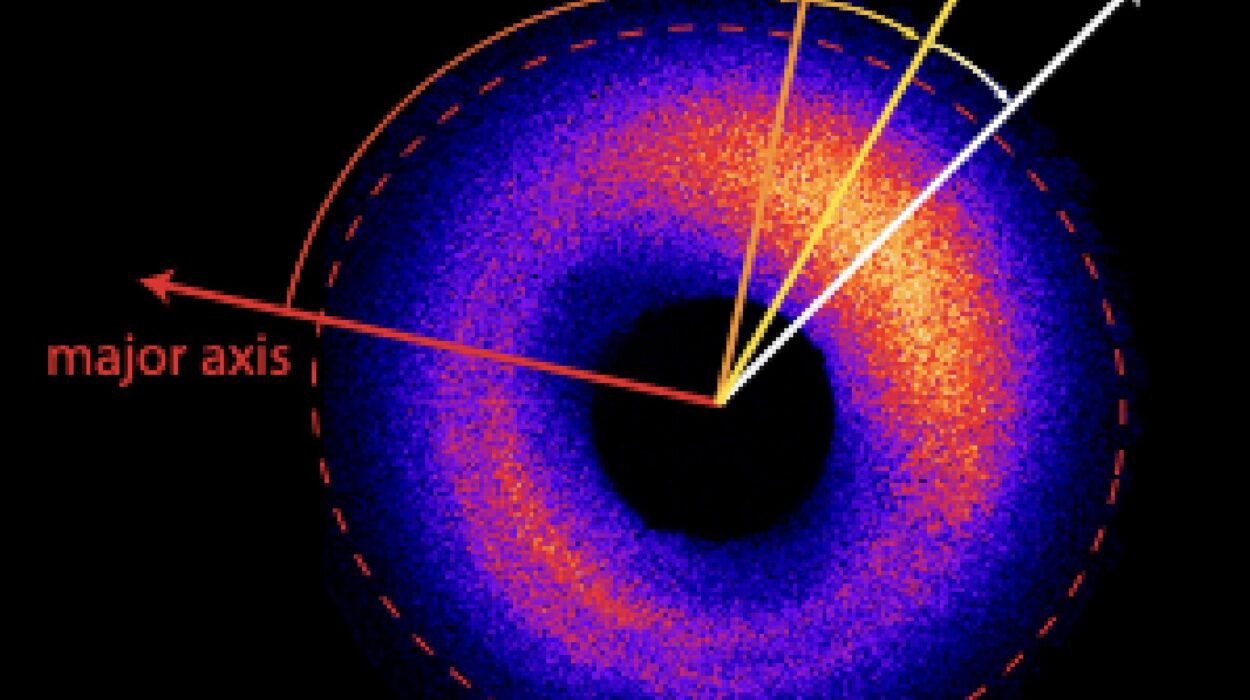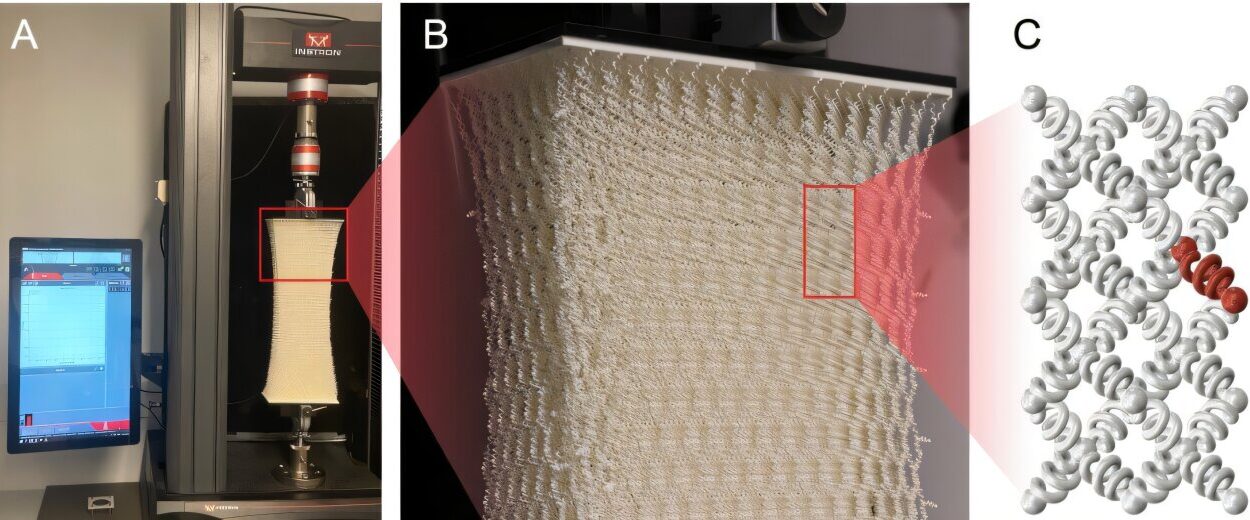In an exciting development, a research team has uncovered that achiral hard banana-shaped particles can spontaneously form exotic structures, such as skyrmions and blue phase III. These discoveries provide fresh insight into the behavior of liquid crystals and materials with no inherent chirality, potentially leading to breakthroughs in applications such as photonics and memory devices. The team’s findings were published in Nature Communications on August 8, 2024.
What Are Skyrmions and Blue Phase III?
To fully appreciate the significance of these new discoveries, it is important to first understand what skyrmions and blue phase III are. Skyrmions are vortex-like structures that were originally discovered in condensed-matter systems, such as helical ferromagnets and liquid crystals. These swirling structures are topologically protected, meaning they maintain their form due to their inherent properties, even when subjected to external influences or fluctuations. This unique characteristic makes skyrmions an intriguing candidate for advanced applications in information storage and processing.
A blue phase III is an amorphous phase of liquid crystals that exhibits strong optical activity. It is often described as having a 3D network of helical and skyrmion-like filaments, which allows it to have distinct physical and optical properties.
What makes these findings remarkable is that skyrmions, typically associated with chiral materials, are now found to emerge in achiral systems, where molecules are symmetric and can be superimposed on their mirror images.
The Role of Achiral Particles in Skyrmion Formation
Traditionally, skyrmions arise in systems exhibiting chirality, where molecules have “handedness” and cannot be superimposed on their mirror images. The introduction of chirality to such systems creates chiral interactions, which can lead to the formation of complex structures like skyrmions. These particles typically form within materials like helical ferromagnets, where their behavior is heavily influenced by the interaction between spins and their positions in the material.
However, the team’s findings suggest a startling shift—skyrmions can form spontaneously in achiral materials. The team demonstrated through particle-based simulations that achiral hard banana-shaped particles, which interact based on excluded-volume effects rather than chirality or spin, are capable of organizing into skyrmion structures.
By using these banana-shaped particles, governed by simple geometrical interactions, the team showed that under the influence of thin confinement, these particles spontaneously form quasi-2D layers, either consisting of isolated skyrmions or dense skyrmion lattices. This contrasts with previous assumptions that skyrmions could only emerge in systems with chirality.
Achieving Robust Skyrmion Lattices and Their Manipulation
One of the key features of these skyrmions, as observed by the research team, is their resilience. These structures are not easily disturbed by thermal fluctuations, a significant challenge for many experimental systems. Thermal fluctuations typically disrupt ordered structures in a material, but in this case, the researchers observed that skyrmions remained stable even under these conditions. Moreover, they exhibited strong responses to external fields, suggesting the possibility for control and manipulation of these structures for technological applications.
The size of these skyrmions can also be manipulated, which has major implications for devices like displays and photonic devices. The researchers discovered that the size of the skyrmions could be adjusted by altering the curvature and dimensions of the banana-shaped particles. This capability to dynamically adjust the skyrmions could aid in fine-tuning photonic devices, potentially allowing the development of novel, high-performance systems.
Emergence of Blue Phase III in Achiral Systems
In addition to skyrmions, the research team also observed the formation of blue phase III under certain conditions. This phase, which has previously been primarily associated with chiral systems, appeared in achiral systems without the typical geometric frustration resulting from confinement. The team discovered that blue phase III arises as a result of complex interactions between particle curvature and the excluded-volume effects within the system.
Blue phase III is characterized by a 3D network of helical and skyrmion-like filaments that exhibit remarkable optical and physical properties. This discovery that achiral systems can exhibit blue phase III highlights the potential to create complex optical materials and possibly use these structures in new photonics and memory devices.
Moreover, the researchers demonstrated that the creation and annihilation of these skyrmions could be effectively controlled by external electric fields. This ability to manipulate the skyrmions in real-time reinforces the idea that such materials could become the backbone of advanced information processing devices.
Connecting Theoretical Predictions with Experimental Observations
The team’s experimental observations of the 3D blue phase III and 2D skyrmion phases were consistent with earlier theoretical predictions. These models suggested that a coupling between polar order (the alignment of dipoles within the system) and spontaneous bend deformations (resulting from particle interactions) could lead to the emergence of intricate, higher-dimensional modulated structures in liquid crystals. What the team showed was that these complex phases were achievable in experimental systems comprising achiral particles.

The researchers were not just satisfied with observing these phases, but also worked to understand and explain how these phenomena come about in their system. By examining how the confined hard banana-shaped particles interact, the researchers could contribute important insights into the dynamics of complex fluids and the underlying principles that govern the stability of these exotic structures.
Implications for Photonics and Memory Devices
The implications of these findings are immense. Skyrmions and blue phase III have been hailed as promising candidates for next-generation memory devices, as these systems possess the necessary characteristics for storing and processing information. Their topological protection—which means that skyrmions and blue phases cannot be easily destroyed—offers enhanced reliability for such devices.
Moreover, the ability to control the size and behavior of these structures opens up vast possibilities in photonics. The potential use of blue phase III and skyrmions in display technology, light manipulation, and even in next-generation communication devices could lead to a leap forward in optical technologies, offering devices with greater speed, efficiency, and functionality than those currently available.
Future Directions
Looking ahead, the team hopes that their work will inspire further experimental investigations into the skyrmion and blue phase III behavior in lyotropic liquid crystals and thermotropic systems. The fact that these exotic phases can be stabilized in systems composed of achiral particles, including colloids and bent-core molecules, underscores the potential to discover novel physical phases across diverse materials.
The ability to realize such complex structures may play an important role in developing adaptive materials capable of performing tasks beyond the scope of current technologies, ranging from new materials in data storage to creating smart optical devices.
Conclusion
The research team’s discovery represents a new frontier in the study of soft matter and liquid crystal physics. By demonstrating that achiral hard banana-shaped particles can form skyrmion and blue phase III structures, they open up a realm of possibilities for the design of advanced functional materials for a wide range of applications in photonics, memory, and information processing. With further exploration and refinement of these materials, we are likely to see a wave of innovations that can potentially transform the future of technology.
As Dr. Marjolein Dijkstra, a lead researcher from Utrecht University and Hiroshima University, expressed, “We hope our findings will inspire future investigations of bend-stabilized 3D blue phase III and 2D skyrmion phases in both thermotropic and lyotropic liquid crystals,” emphasizing the broad scientific and technological impact these discoveries could have.
With these findings, a door has been opened to a new world of material discovery, bringing us closer to smart materials that can evolve and adapt based on external conditions—pointing to the future of how we could think about and interact with materials on a fundamental level.
Reference: Rodolfo Subert et al, Achiral hard bananas assemble double-twist skyrmions and blue phases, Nature Communications (2024). DOI: 10.1038/s41467-024-50935-4






